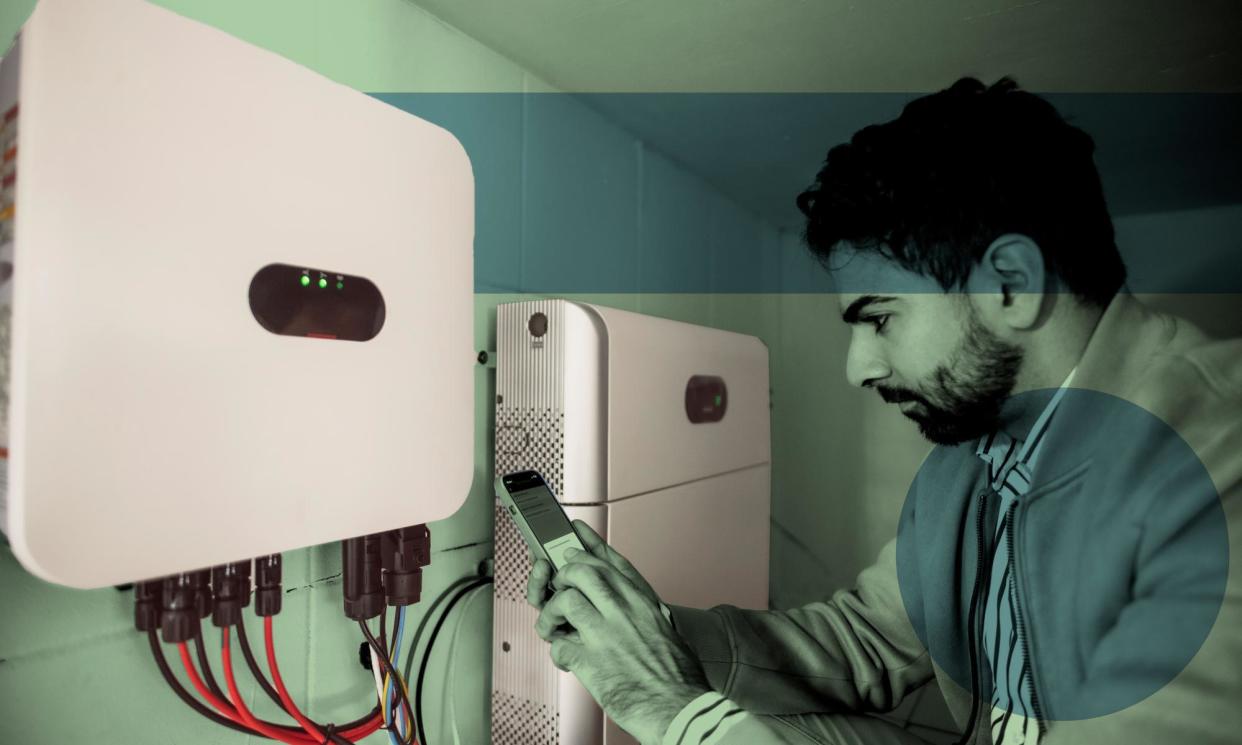Thinking of getting a solar battery? Consider these things first

Like any emerging technology, personal solar storage in the form of “batteries” has been enthusiastically debated and tested by those able (and interested enough) to get into the nitty-gritty. But for those who don’t have the time, energy or inclination to give themselves a crash course in the shifting sands of the Australian energy market, the solar battery landscape can feel impenetrable.
Start looking into solar batteries and you’ll soon find yourself in a quagmire of technical specifications; talk of kilowatt hours, feed-in tariffs, congestion and curtailment and head-wrecking calculations. While the complex mechanisms of energy production, consumption and commerce might make quick sense to some, for many solar punters trying to figure out how to make best use of the excess energy generated by their rooftop arrays, the comparisons and calculations (not to mention the cost) can feel overwhelming.
So how do you know if a battery is right for your household? There may not be a simple answer but there is some consensus on how the battery-curious should tackle the question.
Step 1: make your home energy efficient
Rob McLeod, policy and advocacy manager at Renew, a not-for-profit organisation that specialises in helping people make their homes more sustainable, says the first thing people need to do is make sure their home is as energy efficient as possible. “There’s no point in having a big battery system while you’re still using gas, for example.”
McLeod says people are much better off approaching their energy consumption in a way that is “integrated and holistic” and that installing a battery is the last piece of that puzzle. He recommends people who own their own homes start with a professional energy audit. He insists that this puts people in the best position to reduce consumption and “soak up” any solar energy they are already generating during daylight hours to reduce overflow.
Once your home is operating as efficiently as possible, including having a solar setup, it is likely that you will have some energy to spare. With solar buyback rates plummeting, and even going into the negative, that’s when the real questions about storage begin.
Step 2: consider your motivation
Chris Barnes, the household product category manager at Choice, thinks the first thing people should be asking themselves is about motivation. “Doing it because you’re interested in the technology, because you want to protect yourself against blackouts, because you hate energy companies,” he says is a very different proposition from getting a battery to save money. “It’s not a no-brainer, cost-wise.”
“If you’re on a flat-rate tariff at the moment [the battery] probably wouldn’t pay for itself.” But with time-of-use tariffs becoming increasingly common, Barnes says that if you’re being savvy about how you utilise energy during the day, a battery has the potential to make some economic sense. For now.
“It’s quite a complex calculation,” he says “and it can vary a lot over the years”. Barnes estimates in an ideal scenario the current payback period on most batteries to be six to 10 years. But he cautions that even if you do all your homework now and the sums add up today, things can change: “If you’re looking 10 years down the track, who knows what power rates are going to be?”
Step 3: be patient
Given the mercurial nature of the National Energy Market (NEM), consumers risk wasting a lot of time (and money) optimising a system that suddenly doesn’t work for them.
Dr Asma Aziz, a senior lecturer in power engineering at Edith Cowan University, urges patience.
Related: Why are some Australian households about to be charged for generating too much solar power?
“At this point, customers don’t have any control. It is in the hands of utility companies,” she says.
But she’s confident that in the coming years, as policies are ironed out and the technology advances, the cost benefit analysis will change dramatically in consumers’ favour “There’s no rush, I think now is a time to wait and see.”
Step 4: look at other alternatives
Alternatives to personal batteries are also emerging. The federal government has announced a $200m program installing 400 community batteries across the country to help absorb surplus rooftop solar from 100,000 homes and distribute it, even to those who don’t have solar themselves. But not everyone is convinced they’ll deliver on their promise to make good use of excess solar while driving prices down.
With so many factors at play and an infoscape best suited to energy hobbyists, McLeod says he can understand why everyday consumers might throw their hands up. But he points out that if it’s all too much and you really want to avoid wasting your surplus, electric vehicles operate on the same principle and can be used to soak up excess solar energy during the day.
Australia’s cheapest EV (which is comparably priced to a top-of-the-line Corolla) can hold nearly five times the recommended minimum storage of a household battery.
Ultimately the consensus is that getting into the solar battery game is not for the faint of heart or light of pocket. Doing one’s homework is essential but at this stage even the most well researched purchase could prove financially unviable. “People shouldn’t rule it out … but it is still a bit of a gamble.” Barnes says. While everyone the Guardian spoke with agreed batteries were well worth researching, investing remains speculative.

 Yahoo News
Yahoo News 
